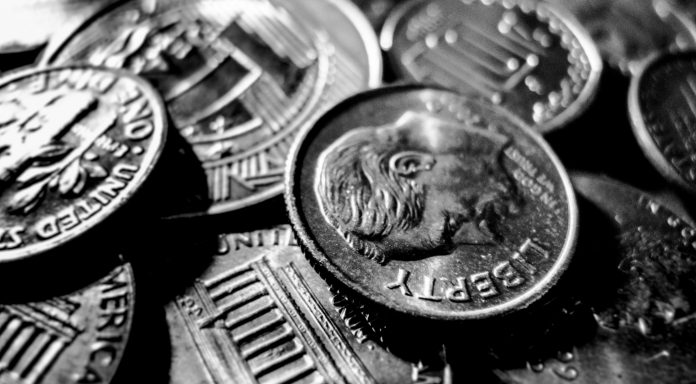Pound investors ignored more good data on Thursday, focusing instead on the continuing Brexit drama. Meanwhile concerns over a cautious Federal a Reserve quickly faded. As a result, the pound US dollar exchange rate dropped to US$1.3005 before rebounding later in the session as a Brexit extension was granted.
| What do these figures mean? |
|---|
|
When measuring the value of a pair of currencies, one set equals 1 unit and the other shows the current equivalent. As the market moves, the amount will vary from minute to minute. For example, it could be written: 1 GBP = 1.28934 USD Here, £1 is equivalent to approximately $1.29. This specifically measures the pound’s worth against the dollar. If the US dollar amount increases in this pairing, it’s positive for the pound. Or, if you were looking at it the other way around: 1 USD = 0.77786 GBP In this example, $1 is equivalent to approximately £0.78. This measures the US dollar’s worth versus the British pound. If the sterling number gets larger, it’s good news for the dollar. |
U.K. retail sales data was the third economic data release this week that’s beat analysts’ expectations. Despite Brexit uncertainties, UK consumers continued to spend, in an encouraging sign for the economy. Strong retail sales come hot on the heels of better than forecast wage growth data, unemployment numbers and inflation figures.
The BoE also opted to ignore the stronger data on Thursday. As expected by analysts, the central banks kept interest rates on hold and gave little indication on future guidance, given that this depends on the type of Brexit the UK achieves.
UK Prime Minister Theresa May was back in Brussels, begging for an extension to Article 50 to prevent the UK leaving the EU on 29th March with no deal.The EU have given Theresa May until 12th April to get her deal through Parliament. In the case that she fails she must decide by the 12th April whether to leave without a deal or have a long extension to Article 50. As the UK moves back from the brink on a no deal, the pound moved higher.
| Why is a “soft” Brexit better for sterling than a “hard” Brexit? |
|---|
| A soft Brexit implies anything less than UK’s complete withdrawal from the EU. For example, it could mean the UK retains some form of membership to the European Union single market in exchange for some free movement of people, i.e. immigration. This is considered more positive than a “hard” Brexit, which is a full severance from the EU. The reason “soft” is considered more pound-friendly is because the economic impact would be lower. If there is less negative impact on the economy, foreign investors will continue to invest in the UK. As investment requires local currency, this increased demand for the pound then boosts its value. |
Dollar Recovers From Dovish Fed
The dollar picked up strength across the previous session, shrugging off the cautious tone from the Federal Reserve earlier in the week. On Wednesday the Fed had kept interest rates on hold but had abandoned hope of hiking rates later in the year. The more dovish tone from the Fed comes following a slight softening in US data and due to concerns over the health of the global economy. The Fed’s more cautious outlook initially sent the dollar lower, however the recovery has been rapid.
| Why do raised interest rates boost a currency’s value? |
|---|
| Interest rates are key to understanding exchange rate movements. Those who have large sums of money to invest want the highest return on their investments. Higher interest rate environments tend to offer higher yields. So, if the interest rate or at least the interest rate expectation of a country is relatively higher compared to another, then it attracts more foreign capital investment. Large corporations and investors need local currency to invest. More local currency used then boosts the demand of that currency, pushing the value higher. |
Today investors have plenty of US data to digest. Investors will focus primarily on US manufacturing activity in March and service sector activity. Additionally, investors will want to see a recovery in housing data due later in the day. Analysts forecast that all three indicators will show an improvement from the previous month. This could help to support the dollar.
This publication is provided for general information purposes only and is not intended to cover every aspect of the topics with which it deals. It is not intended to amount to advice on which you should rely. You must obtain professional or specialist advice before taking, or refraining from, any action on the basis of the content in this publication. The information in this publication does not constitute legal, tax or other professional advice from TransferWise Inc., Currency Live or its affiliates. Prior results do not guarantee a similar outcome. We make no representations, warranties or guarantees, whether express or implied, that the content in the publication is accurate, complete or up to date. Consult our risk warning page for more details.
This article was initially published on TransferWise.com from the same author. The content at Currency Live is the sole opinion of the authors and in no way reflects the views of TransferWise Inc.





